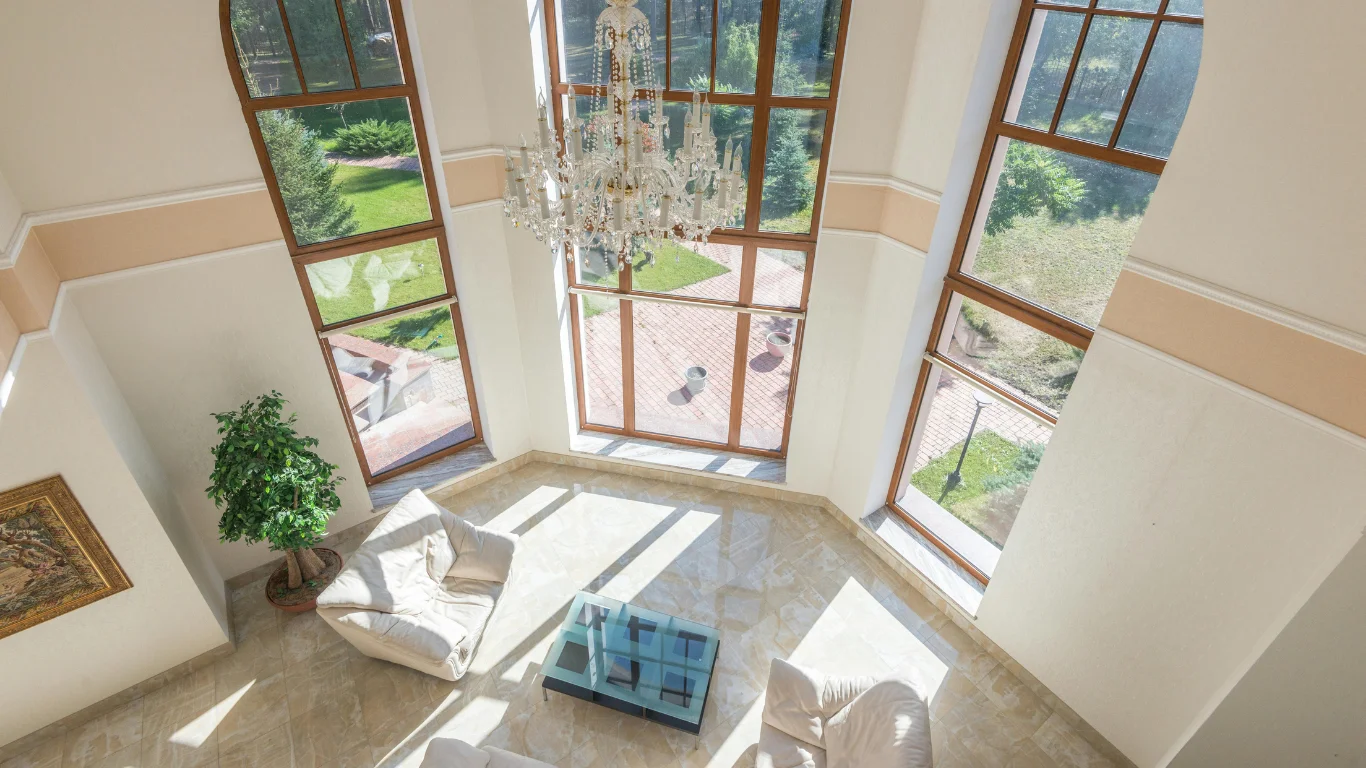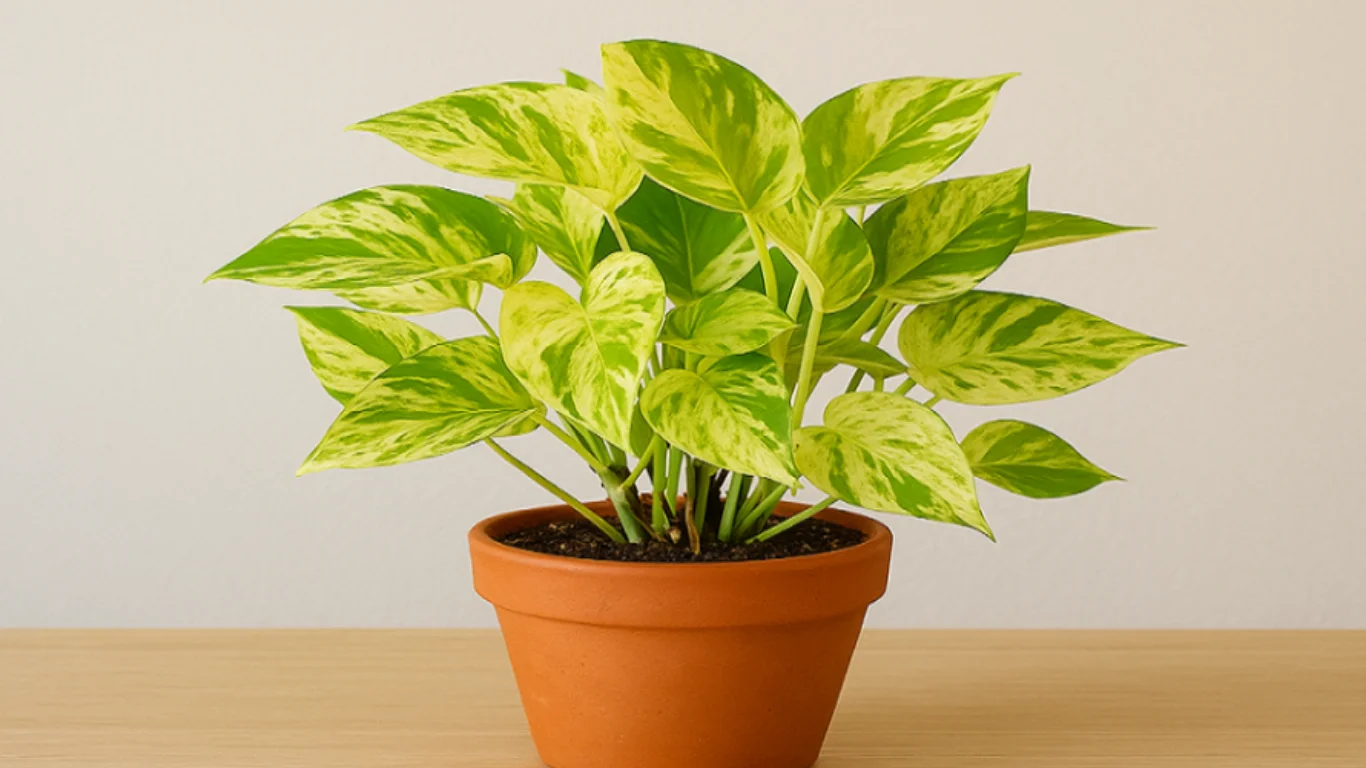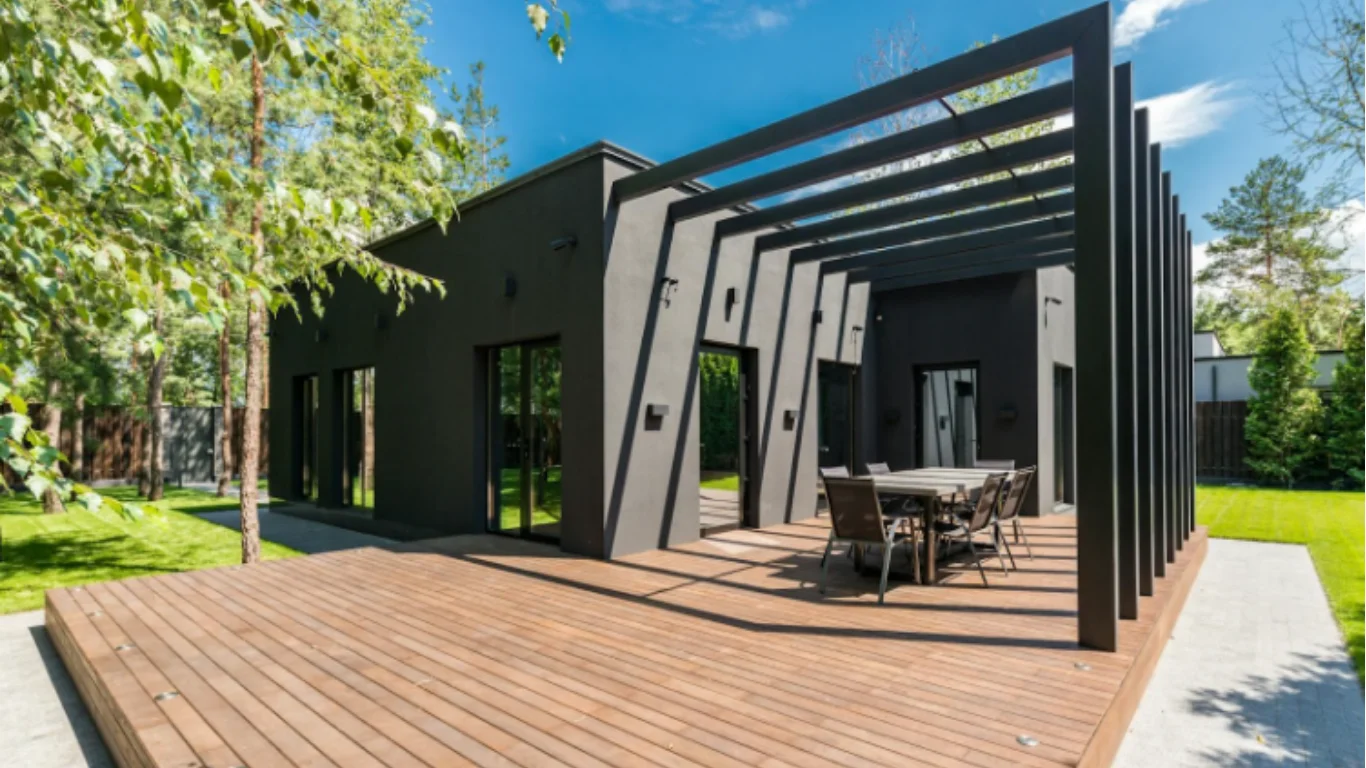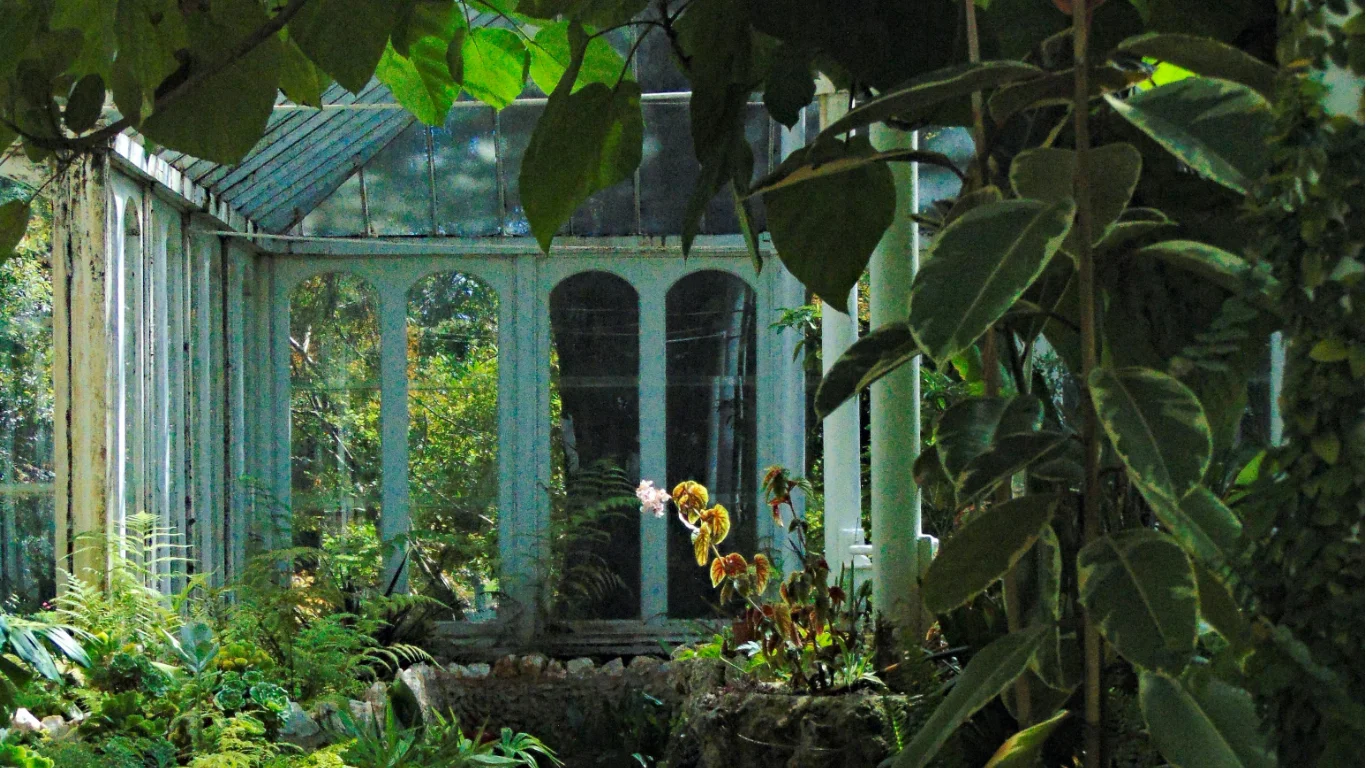Thinking about building a Hamptons style home in Brisbane? Then you should know what features define the style, how to adapt it for our climate, and what budget to expect before you commit.
We’ve worked with many people who fell in love with the aesthetic. But later discovered their home became an oven in summer without constant air conditioning, or use materials that don’t last in Queensland’s humidity.
However, you don’t have to be one of them. Our team at www.begbiebentham.com.au/ has been designing custom homes in Brisbane since 2002. Through hundreds of projects, we’ve figured out what works and what doesn’t.
In this article, we’ll share our insider knowledge. You’ll get to know:
- What makes a home truly Hamptons style
- Main features that define these coastal designs
- Why Brisbane’s climate needs special adaptations
- Cost breakdowns to help you budget
Read on to learn everything about building your dream home.
What Is a Hamptons-Style Home?
A Hamptons style home features bright open interiors, weatherboard exteriors, and a relaxed coastal design inspired by New York’s Long Island beach houses. Imagine a style that started in those upscale beach communities where wealthy New Yorkers spent their summers.
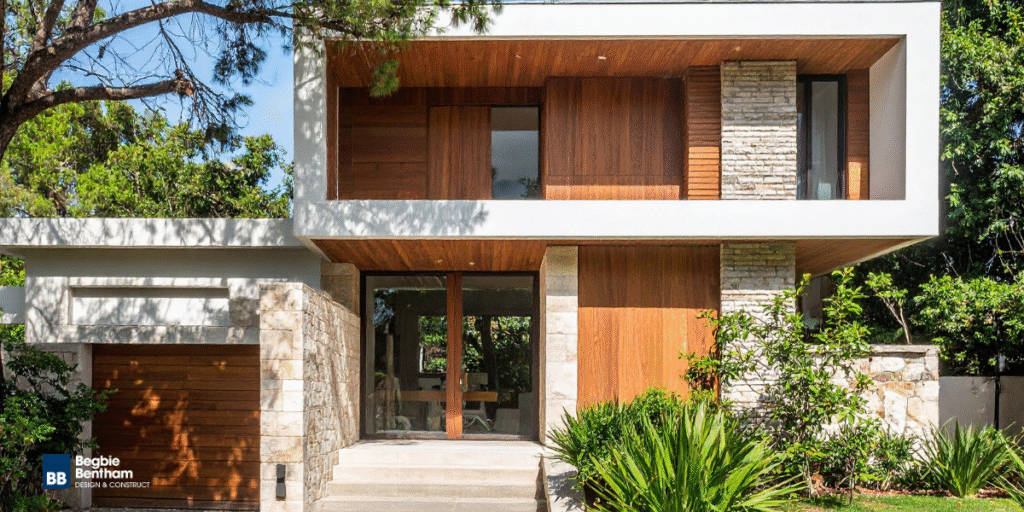
The beauty of these homes is how they combine sophistication with comfort. You get those crisp white weatherboards on the outside, usually with some blue accents. So you end up with that instantly recognisable coastal look.
Inside, the design stays restrained but luxurious. There are high ceilings, plenty of natural light flooding through large windows, and open spaces that feel airy without being cold.
What sets this style apart is how it combines classic architecture with modern convenience. You’re getting timeless elegance that works beautifully for everyday family living, not just a showpiece that’s too fancy to use.
Why are Hamptons-style Homes Popular in Brisbane?
Brisbane homeowners love this style because it combines luxury with the practical outdoor living our climate demands. When you drive through the suburbs, you’ll notice how these homes catch attention while still fitting in beautifully with the local character.
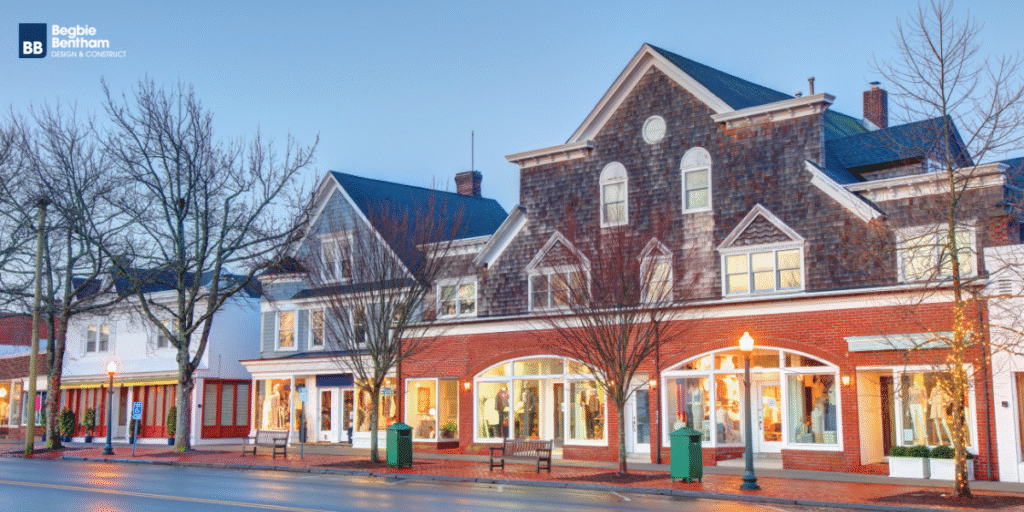
Here’s why this style keeps gaining popularity in Brisbane suburbs:
Brisbane’s Climate Suits the Style
Our warm weather and outdoor lifestyle make this design a natural fit. The open layouts and large windows that define Hamptons homes work perfectly in South East Queensland.
Also, the style naturally captures sea breezes and maximises natural light year-round. That means you’re working with Brisbane’s climate instead of fighting against it.
Timeless Design That Holds Value
You’re probably wondering why this style never seems to go out of fashion. The reason is simple: the design looks as good now as it did decades ago when it was pioneered.
Those classic white exteriors and neutral palettes don’t date like other trends (unlike that avocado bathroom suite from the 70s). Even better, these dream homes maintain strong resale value in Brisbane’s market.
Perfect for Indoor-Outdoor Living
The best part about Hamptons homes is how effortlessly they connect your indoor and outdoor spaces. With large balconies and verandahs, you can extend the living space outdoors perfectly.
And when you’ve got open plan areas connecting family zones, entertaining becomes easy. Your alfresco areas blend with your interiors to suit the Australian lifestyle we all love.
Now that you know why this style works so well in Brisbane, let’s look at the features that define these homes.
What Are the Main Features of Hamptons-Style Homes?
The main features include weatherboard cladding, gable roofs, light colour palettes, and open living spaces. You can spot one of these homes from down the street because of how these design elements work together to create that classic coastal look.
These are the features you’ll see in each authentic Hamptons home:
Weatherboard Cladding and Gable Roofs
Walk down any street in Ascot or Hamilton and you’ll spot these homes instantly by their exteriors. That weatherboard cladding in crisp white creates the iconic coastal look everyone recognises.
While the gable rooflines improve ventilation, those pitched roofs with larger eaves provide shade in Brisbane’s heat. So you’re getting both visual appeal and practical climate control in one design.
Light Colour Palettes
Colour choices ultimately make or break the Hamptons look. Crisp whites, soft neutrals, and muted blues dominate the palette in these homes. You’ll typically see white joinery paired with duck egg blue or seafoam green accents throughout.
The reason designers stick with light colours is that they reflect sunlight and create those airy, bright interiors the style is famous for.
Pro Tip: Choose your main white first, then pick just one accent colour for cushions and decor to keep the look cohesive.
Open Plan Living Spaces
Ever wondered why these homes feel so much bigger than their actual square metres? It’s because the kitchen, dining, and living areas flow together without walls dividing them.
High ceilings make the space appear larger and keep air circulating throughout the house. Then those large French doors or bi-fold doors connect the inside to the outside. Together, these elements make your home feel even more expansive.
Natural Materials and Textures
The materials you pick will determine whether your home feels authentic or like a cheap imitation. Choose materials that layer together to create depth and texture:
- Foundation materials: Timber flooring, stone benchtops, and custom cabinetry add warmth you just don’t get with painted surfaces.
- Architectural details: You’ll want plantation shutters, wainscoting, and VJ boards for character and detail.
- Finishing touches: Layer in natural fibres like linen, jute, and rattan to bring that coastal feel home.
In our experience, homes that mix at least three different natural textures feel more collected and authentic than those that stick to just one.
Once you know what features define the style, it’s time to talk about adapting these designs for our Brisbane climate.
How Do You Adapt Hamptons-Style for Brisbane’s Climate?
Your Hamptons-style home needs to be carefully adapted to Brisbane’s subtropical climate.
Builders designed the original Long Island homes for cold winters and mild summers. But here in Brisbane, we face the opposite problem with year-round warmth and intense humidity.
Here’s how to adapt the style properly:
Design for Airflow and Ventilation
Modern ventilation design cuts your cooling costs and keeps your home comfortable year-round. For example, cross-ventilation (wind-driven airflow) reduces your reliance on air conditioning during those warm months.
However, you still need backup when the breeze dies down. Ceiling fans in elegant styles keep air circulating efficiently without ruining the aesthetic.
Useful Tip: Position your living areas to catch prevailing breezes from surrounding areas. It will naturally cool the house down.
Choose Weather-Resistant Materials
Brisbane’s intense sun and humidity will destroy the wrong materials within a few years. That’s why you need UV-resistant paint and marine-grade fixtures that can handle our sun without fading or corroding.
Instead of copying authentic American designs, go with corrugated metal roofs that need far less maintenance than those timber shingles you see on Long Island homes.
We recommend investing in quality weatherboard cladding because it withstands humidity and intense sunlight much better than cheaper alternatives that warp or peel.
Avoid Authentic US Design Problems
Now here’s the truth most builders won’t share about these homes: authentic Hamptons designs weren’t made for Queensland’s heat.
Designers built those authentic homes for colder climates where lakes completely freeze over. When you use the same approach in Brisbane, you’ll likely end up trapping heat and creating expensive cooling bills.
To avoid this mistake, you should work with an experienced builder who adapts the style to our subtropical conditions.
How Much Does a Hamptons-Style Home Cost in Brisbane?
Cost is usually the first question homeowners ask when they’re considering this style. And we get it, it’s a huge investment, and you want clear numbers before committing.
A standard custom home in Brisbane ranges from $3,500 to $5,000+ per square metre, excluding land costs. These Hamptons-style homes typically sit in this mid-to-high range because of the detailed architectural features and premium finishes involved.
However, the final cost depends on the home size, floor plan complexity, and inclusion level choices. For instance, a single-storey design with standard inclusions costs less than a two-storey home with multiple gables and premium materials throughout.
That’s why you should contact your local specialists for detailed cost breakdowns. They can provide accurate pricing based on your specific block, design preferences, and customisation level (and save you from the awkward “why didn’t you tell me?” conversation later).
Your Hamptons-Style Home Starts Here
Building a Hamptons-style home in Brisbane comes with challenges like adapting cold-climate designs for our heat and choosing materials that withstand humidity. But when you get the right builder who understands climate-responsive design and quality materials, these problems no longer drain your budget or compromise your comfort.
We’ve covered what defines authentic Hamptons homes, the features that make them work, climate adaptations for Brisbane, and realistic cost expectations. You now know how to spot quality design versus cheap imitations.
And if you need guidance on your build, we’re here to make sure your project heads in the right direction from day one.
